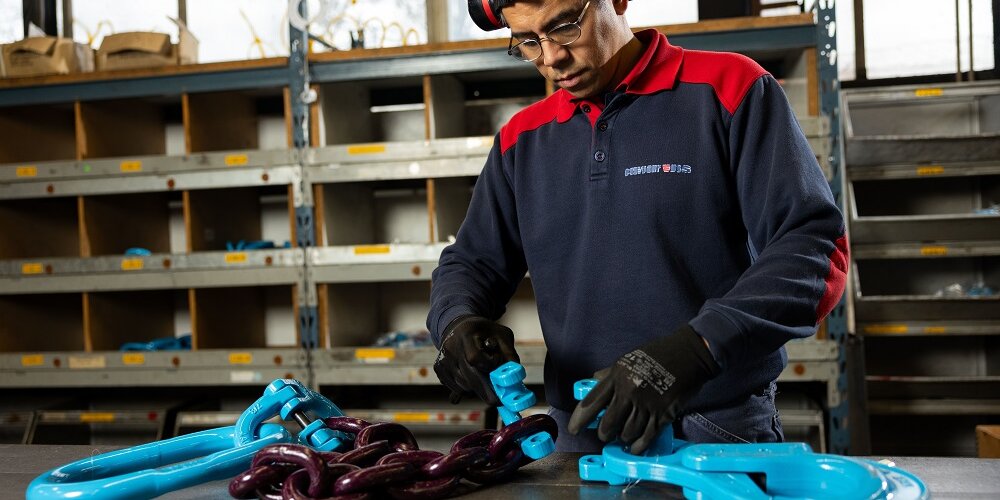
Advantages of Grade 10 chains and components
This is why it can be an advantage to choose Grade 10 chains and components
Most users are familiar with Grade 8 (also called Grade 80), which for many years was the most commonly used in many industries. Grade 8 means the minimum tensile strength of the steel of 800 N/mm2. The Grade 8 steel is a refined type of steel called Alloy Steeland must have a certain composition with certain alloying elements according to the EN 818-2 standard.
Today, however, Grade 10 (also called Grade 100) is the most commonly used Grade for lifting chain slings and assemblies - but why is that?
Grade 10 provides greater flexibility
Grade 10 chains and components are approximately 25% stronger than comparable Grade 8 equipment. This means that with Grade 10 chain slings you can lift heavier loads with the same chain diameter.
The lower weight of the equipment means less heavy lifting
During hoisting work, one must regularly lift, handle and move the lifting equipment (in this case chain slings), which can be harmful over time.
The advantage of the higher WLL of Grade 10 compared to Grade 8 chain means that in many cases you can opt for a smaller diameter Grade 10 chain sling with a lower net weight.
For example: You want to lift a load of 4 tons with a chain length.
When using Grade 8, a chain length of ø13mm is required. When using a Grade 10 chain length, a ø10mm length will be sufficient.
The weight of a chain length with 1m chain (assuming a suitable standard top link and valve hook): Grade 8 -ø 13mm = approx. 8 kg and Grade 10 -ø 10mm = approx. 5 kg
A difference of approximately 3 kg! You can imagine that with a chain 4-way jump with a working length of 4 m, this will make a big difference in weight.
Fortunately, many companies strive and focus on creating an attractive work environment for their employees. Therefore, most companies have already followed the trend and switched to Grade 10.
Is it more expensive to choose Grade 10?
The price difference with Grade 80 has decreased significantly in recent years because many manufacturers have switched to standard production of Grade 10 chain and components.
In general, it is still slightly more expensive to purchase Grade 10 chain slings instead of Grade 8 slings. But as mentioned earlier, when using Grade 10 chain slings it may in many cases be possible to opt for a smaller diameter chain sling due to the higher workload and is in fact cheaper. In addition, you also have the advantage of a lower net weight of the sling.
Are the repair and maintenance requirements for Grade 10 different?
Whether you use Grade 8 or Grade 10 chains, the laws and requirements for repair and maintenance are the same. The same European standard applies to both types. Lifting chains must be inspected at least every 12 months and tested and approved at least every 48 months.
Is there even a higher class of chain and components?
Yes, chain work is available in Grade 12. Grade 12 chains and components are approximately 50% stronger than comparable Grade 8 equipment. A disadvantage, however, is that the standard range is not as extensive as the Grade 8 and 10 program and currently only goes up to a maximum diameter of 16mm.
Mennens offers chain components in all classes, including Grade 12, but today our standard range consists of Grade 10 chainwork.
Safety before everything!
Always follow the specified working load (WLL) for the different types of chain slings. You can find this on the mandatory label of the sling. Always read and understand the instructions and manual before using the product. Always visually inspect the lifting equipment for defects before use.
If defects, deformation of the lifting equipment and/or the absence of the WLL are found, immediately take the lifting equipment out of use for further inspection or repair.





